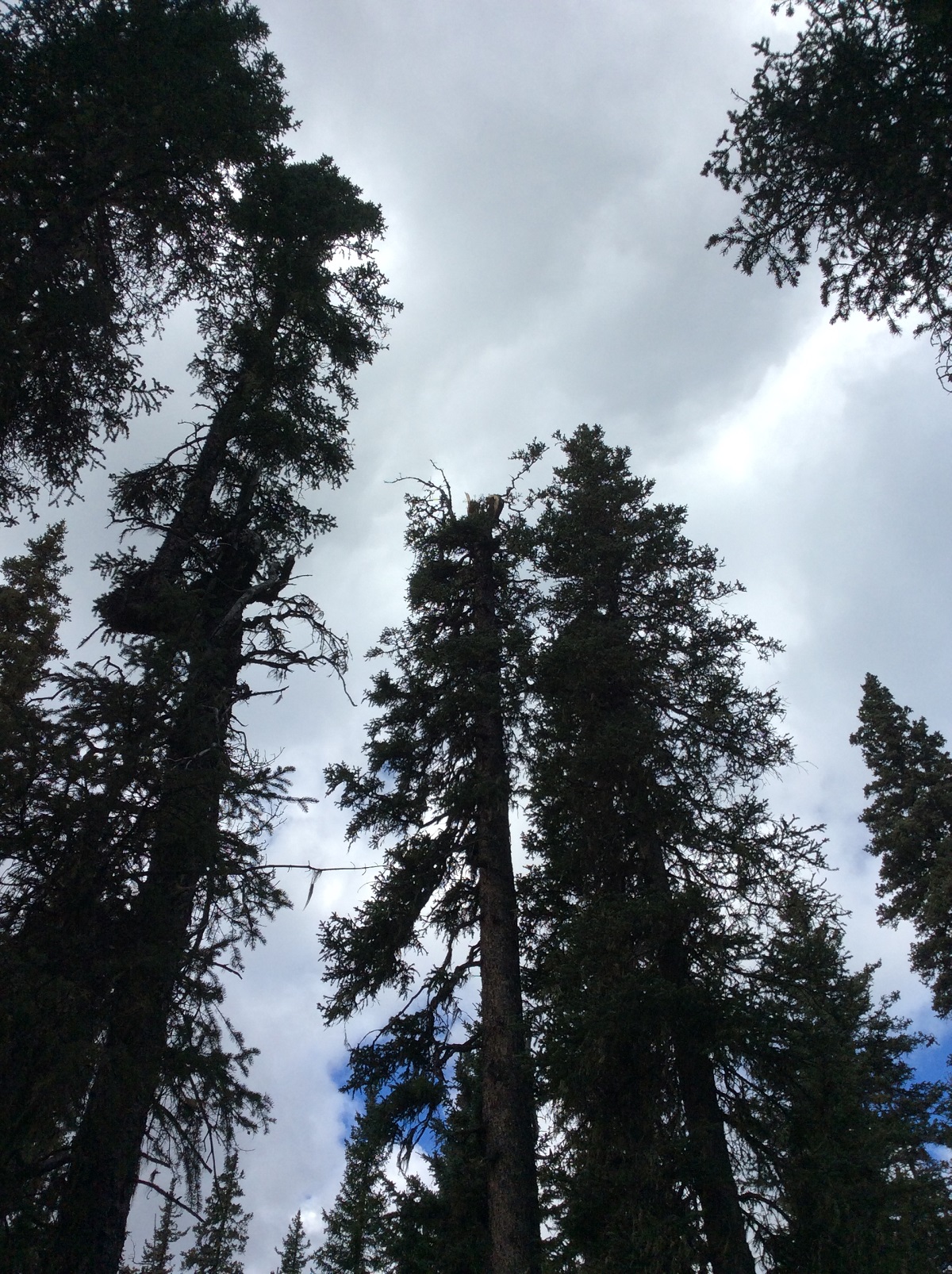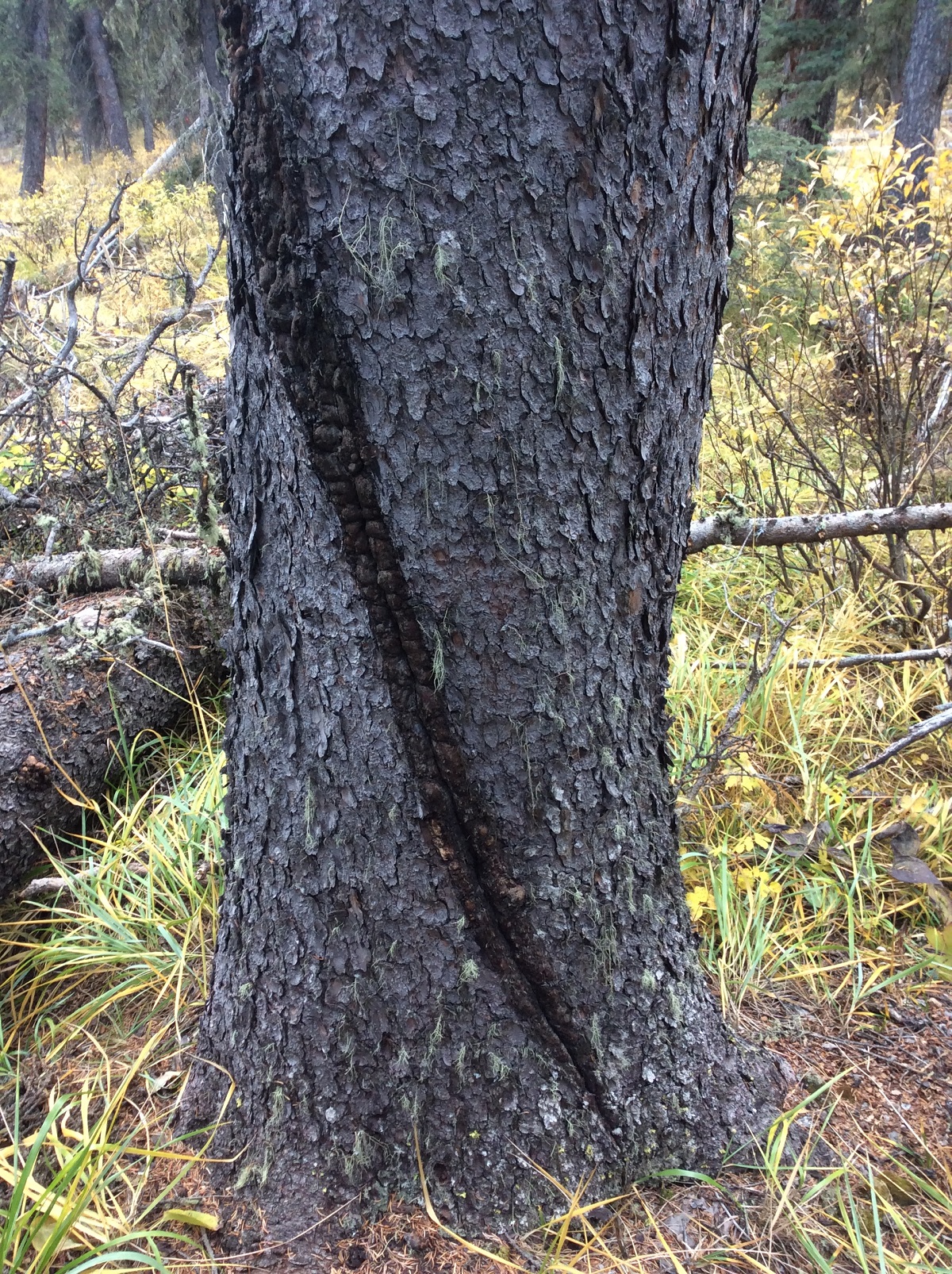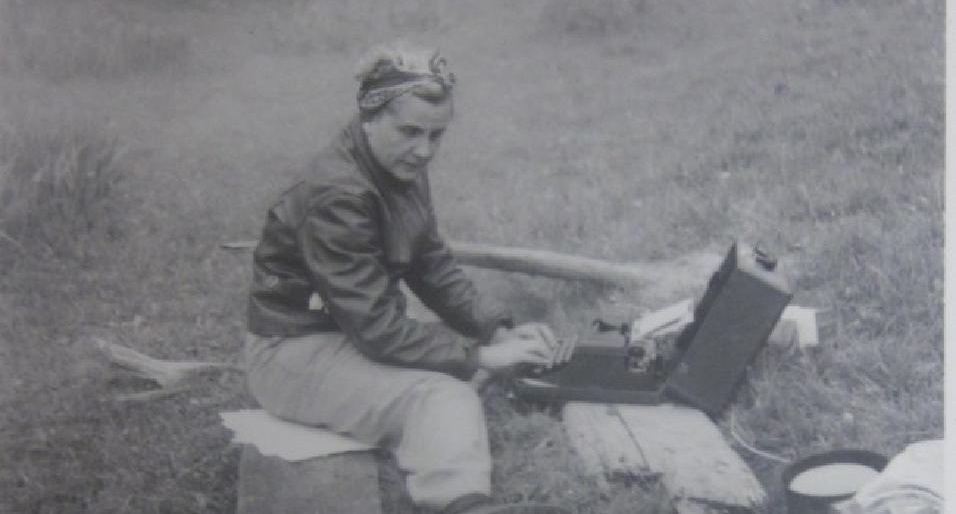Post Category : Field Life
Lightning Trees
Last year, while conducting survey with Brittany in a remote region of northern Alberta, I noticed some unusual scarring on a large spruce tree. Upon closer examination I realized the tree had been struck by lightning.
Usually when lightning hits a tree, one of three things may happen:
- If the tree is wet on the outside, the electrical discharge may travel down the outside of the bark to ground and have little effect on the tree itself.
- If the tree is not wet, the discharge may travel down the tree on the inside of the bark, which will result in scarring. In my experience, this will usually be one or more scars that revolve around the trunk of the tree as the discharge travels downwards.
- If the tree is not wet, but is full of moisture, the moisture may be super heated and instantly turn into gas that quickly expands and causes an explosion. This may blow the bark off the tree, blow the top off the tree, or in some circumstances completely destroy the tree.
The tree that Brittany and I stumbled across had a considerable amount of damage due to the lightning strike. Yet, even though the tree had substantial bark scarring and its top blown completely off, it did not die and seemed to be in pretty good shape.

As rare as finding a lightning tree may seem, trees are actually struck by lightning very frequently. The Government of Canada reports that there is an average of 2 million cloud to ground lightning strikes per year in Canada, igniting approximately 45% of all our forest fires. These fires account for nearly 80% of the total forests burned annually. Although I wasn’t aware of these statistics until recently, my time working as a Forest Fire Fighter made me very aware of the frequency, since many of the fires we were called to fight were started by lightning. Even during a torrential downpour, lightning may still strike a spruce tree, causing a small fire to start at the base where it is sheltered by the branches. Days or even weeks later, when the temperature rises and the vegetation dries out, the fire may grow substantially in size. Suppression of these fires cost Canadian taxpayers a substantial amount of money. The Government of Canada has a whole section of their website dedicated to severe weather.

Taking refuge under a tree during a thunderstorm is very unwise. It may seem like a good place to keep dry during a sudden downpour, but it is actually one of the most unsafe places you could be. Indoors is always the safest place to be. However, if you are caught without shelter in a thunderstorm, the best place to be is in a low lying area such as a ditch. You might not stay dry, but you will be safe from lightning. Just make sure you watch out for flooding!
If you do happen to stumble across a lightning tree like Brittany and I did, you may want to take a little token for yourself (as long as it doesn’t harm the tree if it is still alive). Many people believe that the wood from a lightning tree will bring you good luck. Others believe that the power passed from the lightning to the tree, can then be passed on to whoever possesses its wood. Even if you are all full up on power and luck, you could always just keep the wood as a souvenir and reminder of the raw and devastating power of nature.



